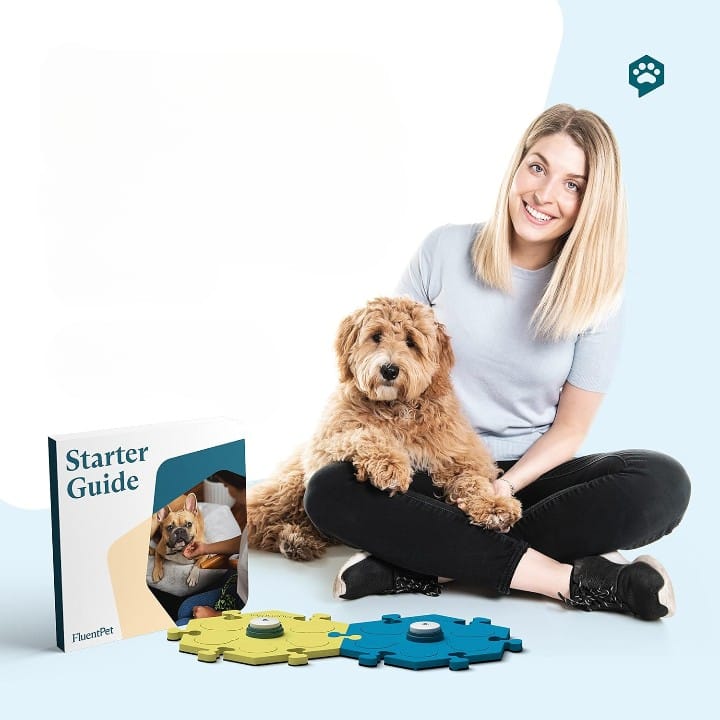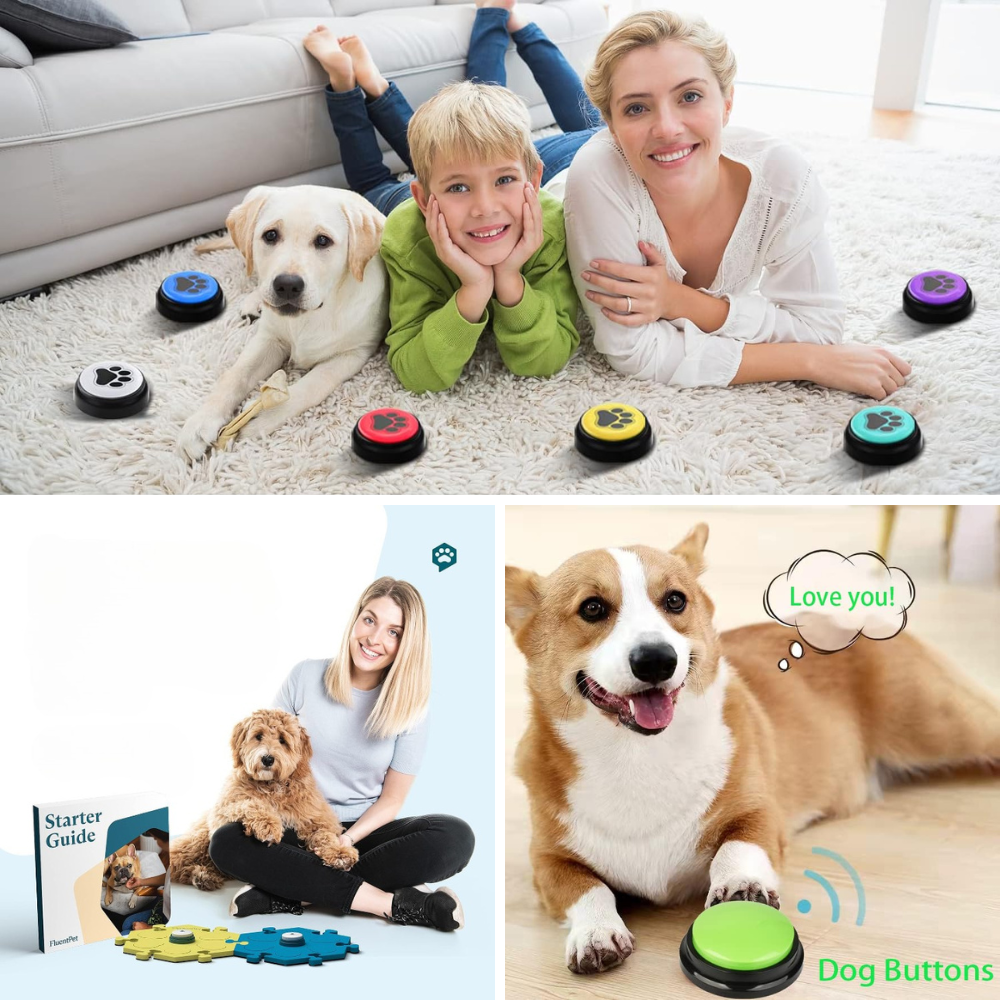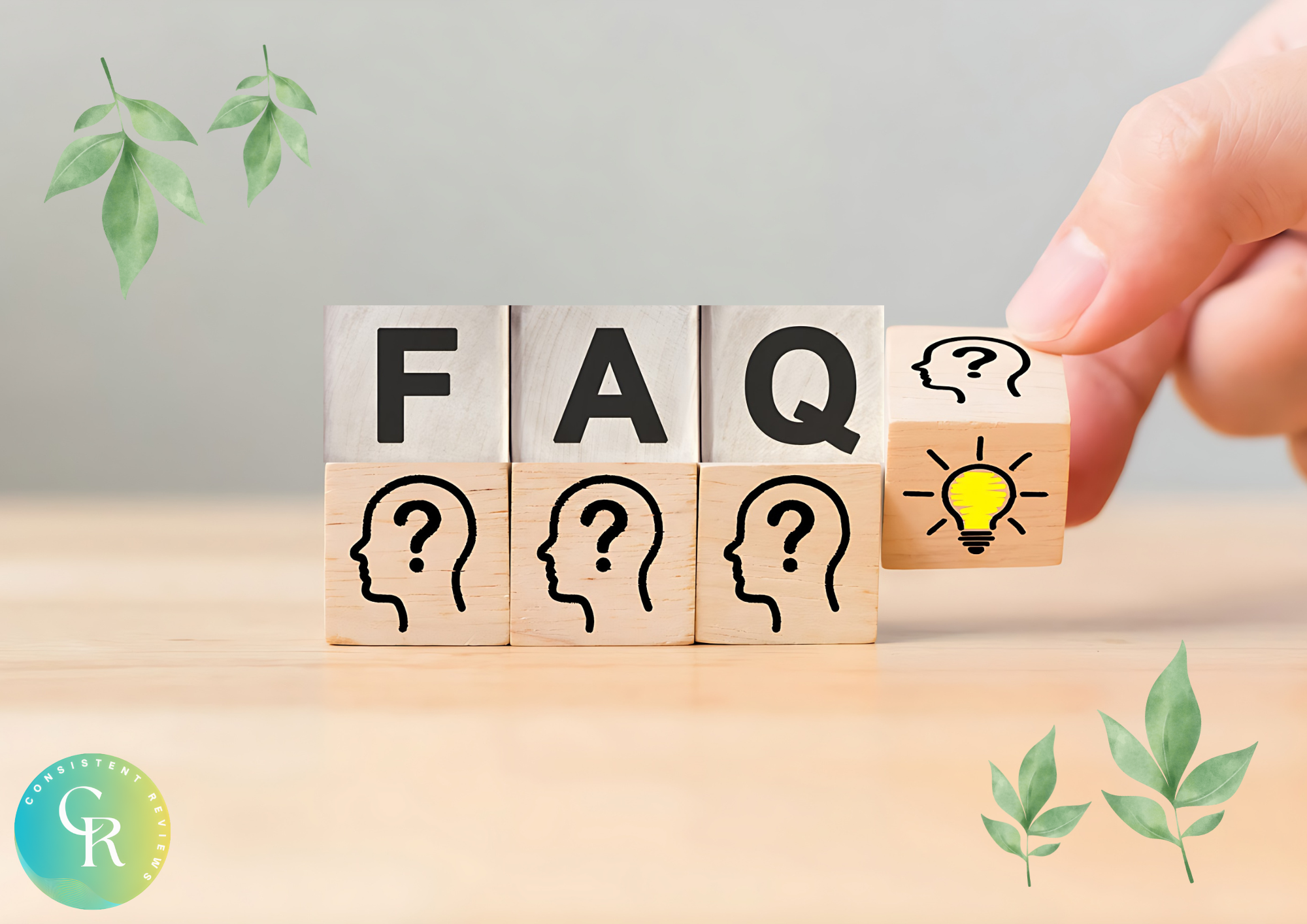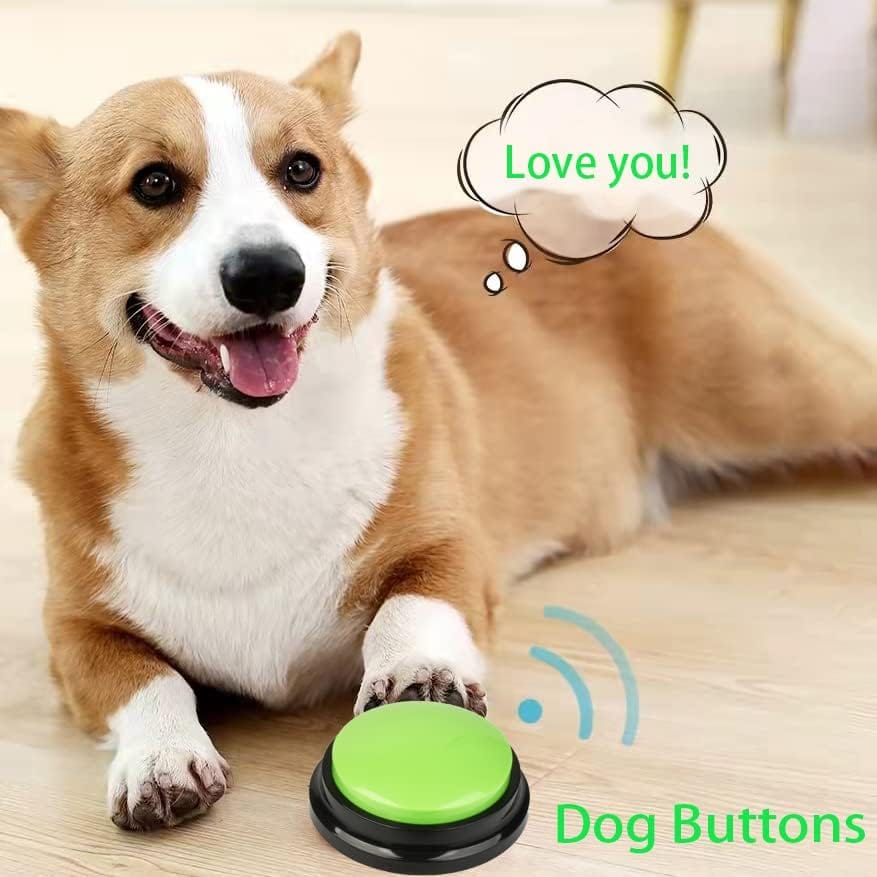Key Takeaways:
- Dog button training is a method that enables dogs to communicate using recordable buttons.
- Consistency, patience, and positive reinforcement are crucial in teaching your dog to use communication buttons.
- Understanding your dog's body language and cues can significantly enhance the training process.
Introduction to Dog Button Training
Dog button training is an innovative approach that allows pet parents to delve deeper into the minds of their canine companions. By using recordable buttons, dogs can express their needs, desires, and even emotions. This method has gained popularity thanks to the work of speech-language pathologist Christina Hunger, MA, who taught her dog, Stella, to communicate using soundboards. The training process involves teaching your dog to press buttons that play pre-recorded words, enabling them to "talk" with their human family.
The Science Behind the Training

At the heart of dog button training lies the concept that non-human animals are capable of understanding human language to a certain extent. Research from the Comparative Cognition Lab has shown that dogs, like the famous border collie named Chaser, can learn the names of over a thousand toys. Dog button training takes this a step further by allowing dogs to actively use words to communicate. This method leverages the natural abilities of dogs to associate sounds with actions or objects, much like they learn commands in traditional training.
Getting Started with Dog Button Training
To start teaching your dog to use communication buttons, you'll need a set of recordable buttons, each programmed with different words. Begin with just one or two buttons for basic needs like "outside" or "play." Place these buttons in a centralized location where your dog can easily access them. The initial phase focuses on associating the pressing of a button with the action it represents. For example, pressing the "outside" button means the door opens for a walk.
Choosing the Right Buttons
When selecting buttons for your dog, consider opting for large, circular buttons that are easy for your dog to press. Ensure that the buttons are durable and can withstand the enthusiasm of a dog pushing them repeatedly. The sound quality should be clear, and the volume loud enough for your dog to hear the word associated with each button.
First Steps in Training
The first word you teach your dog is crucial. Many pet parents start with essential needs like "hunger" or "thirst." Hunger taught Stella, her dog, to use the "outside" button first, as it was a word that Stella could use frequently on a day-to-day basis. Consistency is key; every time you go out, encourage your dog to press the "outside" button and immediately reinforce the action by opening the door.
Expanding Your Dog's Vocabulary
Once your dog masters one or two buttons, you can gradually introduce more buttons with different words. Some dogs may learn quickly, while others may take more time to understand the concept of pressing buttons to communicate. It's important to choose words that are relevant to your dog's life and to introduce new words one at a time.
Training Techniques
Target training can be a helpful tool in teaching your dog to press buttons. By using a target stick or simply pointing, you can guide your dog to the button you want them to press. Positive reinforcement, such as treats or praise, should follow immediately after your dog presses the button correctly. This reinforces the connection between the button, the word, and the reward. Customizing Button Vocabulary for Your Dog When introducing dog talk buttons to your pup, it's essential to customize the vocabulary to match your dog's life and daily experiences. Start with simple, high-frequency words that your dog is likely to use on a day-to-day basis, such as "outside," "play," or "toy." This personalization ensures that the dog pushes buttons that are meaningful and useful, encouraging more frequent use and engagement.
As your dog becomes more adept at using the talking buttons, you can gradually introduce more complex phrases or concepts. For instance, instead of just one word, you might combine multiple buttons to express a full desire, like "want toy" or "go outside." This expansion not only enriches your dog's ability to communicate but also stimulates their cognitive functions, making the training process a rewarding experience for both you and your pet.
Integrating Technology with Dog Button Training In the realm of dog button training, technology plays a pivotal role. Speech buttons often come with pre-recorded sounds that are clear and consistent, which is crucial for your dog to talk with buttons effectively. Christina Hunger, MA, a speech-language pathologist, has demonstrated the potential of using such devices to enable non-human animals to communicate their thoughts and needs.
For pet parents looking to delve deeper into this training method, more resources are available that can help guide the process. From specialized apps that track your dog button usage to online communities sharing helpful tips, technology can provide a wealth of support. Additionally, some systems allow for customization of the sound bites, meaning you can record your voice for each button, which may help your average dog feel more at ease with the training process. The Role of Consistency in Dog Button Training Consistency is the bedrock of any successful training regimen, especially when it comes to dog button training. For your dog to truly integrate the use of buttons into their daily communication, the placement of the buttons and the associated actions or objects must remain constant. This means that if a button is used to signify "outside," it should always be placed in the same location and should only be used for that specific purpose. Consistency helps non-human animals like dogs to form a reliable association between the button and its meaning, which is crucial for effective communication.
Moreover, the consistency in response from the pet parent is just as important. When a dog presses the "outside button," the action of opening the door to go outside should follow promptly. This reinforces the dog's understanding that their communication has been acknowledged and acted upon. Inconsistencies in response can sound daunting to a dog's learning process, leading to confusion and a lack of trust in the system. Therefore, pet parents must commit to a consistent routine when engaging with their dog's buttons.
Understanding Your Dog's Perspective
It's essential to pay attention to your dog's body language and cues during the training process. Dogs communicate primarily through body language, and incorporating this understanding can make button training more effective. If your dog is showing signs of frustration or confusion, it may be necessary to slow down and review the basics.
The Role of Patience in Training
Patience is a virtue in any training process, and dog button training is no exception. Some dogs may take weeks or even months to fully grasp the concept of using buttons to communicate. It's important not to rush the process and to allow your dog to learn at their own pace.
Troubleshooting Common Issues
If your dog starts pressing buttons randomly or seems to lose interest, it may be a sign that they are either confused or not finding the training rewarding. Re-evaluate your training approach, ensure you're using clear and consistent cues, and make sure the rewards are motivating for your dog.
Advanced Training: Beyond Basic Needs
As your dog becomes more proficient with the buttons, you can start introducing more abstract concepts. Some dogs have been taught to express emotions like "happy" or "sad" using buttons. This advanced level of training requires a deep understanding of your dog's behavior and the ability to interpret their attempts at communication accurately.
The Impact of Dog Button Training on Pet Parents
Dog button training can significantly enhance the bond between dogs and their pet parents. It provides a glimpse into the dog's mind, allowing for a two-way conversation that was previously impossible. This can lead to a more harmonious relationship and a better understanding of your dog's needs and desires.
The Future of Dog Communication
As more pet parents explore dog button training, the potential for understanding our canine companions continues to grow. This training method opens up new possibilities for studying canine intelligence and communication, potentially leading to even more sophisticated ways for dogs to express themselves.


How many words can a dog learn to use with buttons?
The number of words a dog can learn varies. Some dogs, like the border collie Chaser, have learned over a thousand words. With button training, many dogs can learn dozens of words, and some may learn even more with consistent training.
Can any dog learn to use communication buttons?
Most dogs have the potential to learn to use communication buttons, but success can depend on the individual dog's interest, the training method used, and the patience of the pet parent. It's important to tailor the training to your dog's pace and motivation.
How long does it take for a dog to learn to use a button?
The time it takes for a dog to learn to use a button can vary widely. Some dogs may pick up the concept in a few days, while others may take weeks or months. Consistent training and positive reinforcement are key factors in the learning process.
What is the fun dog language?
Dogs communicate with humans and other dogs using a combination of physical gestures, sounds, and body language. While they don't have a "language" in the human sense, they do use a variety of signals to express their feelings and intentions.
Can dogs talk one day?
While dogs can understand and respond to certain words and commands, they do not have the physical capability to produce human speech. Their vocal cords, mouth shape, and tongue are not designed for speaking as humans do. However, they can learn to associate specific sounds or words with actions or objects.
How do I teach my dog to say I love you?
While dogs can't speak human words, they can be trained to make certain sounds on command. You can train your dog to "say" I love you by teaching them to howl or bark in a certain pattern. But remember, dogs express their love through their actions – wagging their tail, licking your face, staying close to you, etc.
How long do dogs remember words?
Dogs have been shown to remember words and commands for years, especially if they are used consistently. However, their memory works differently than human memory, and it's not fully understood how long-term dog memory works.
How do I communicate with my dog?
The most suitable way to communicate with your dog is through consistent training and positive reinforcement. Use clear, consistent commands and reward your dog for following them. Also, pay attention to your dog's body language, as this is their primary way of communicating with you.
What is the highest dog IQ?
Dog intelligence is measured in different ways than human IQ, and it can vary greatly among individual dogs. However, Border collies are often cited as one of the most intelligent breeds, based on their ability to understand and follow commands.

Dog button training is a revolutionary method that allows dogs to communicate with their human counterparts using recordable buttons. This training requires patience, consistency, and an understanding of your dog's body language. Starting with basic needs and gradually expanding to more complex concepts can help your dog build a robust vocabulary. The training not only enhances the bond between dogs and pet parents but also provides valuable insights into canine cognition.










